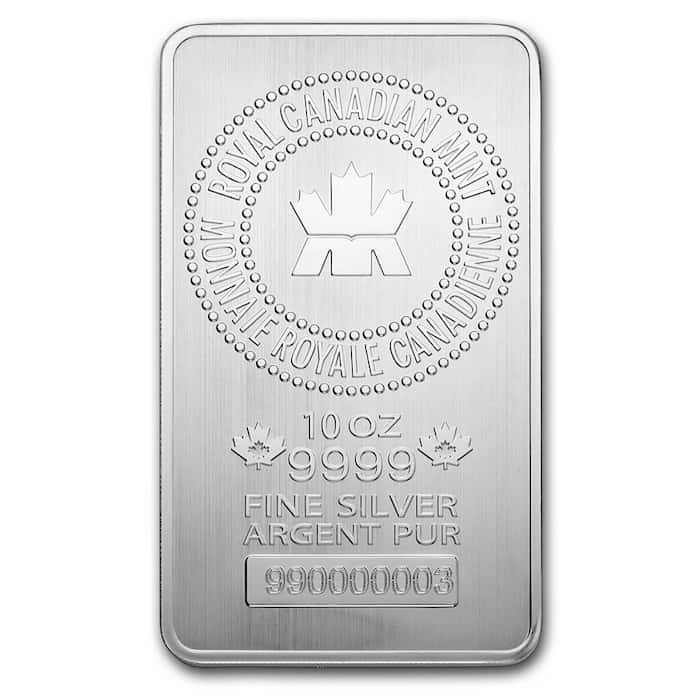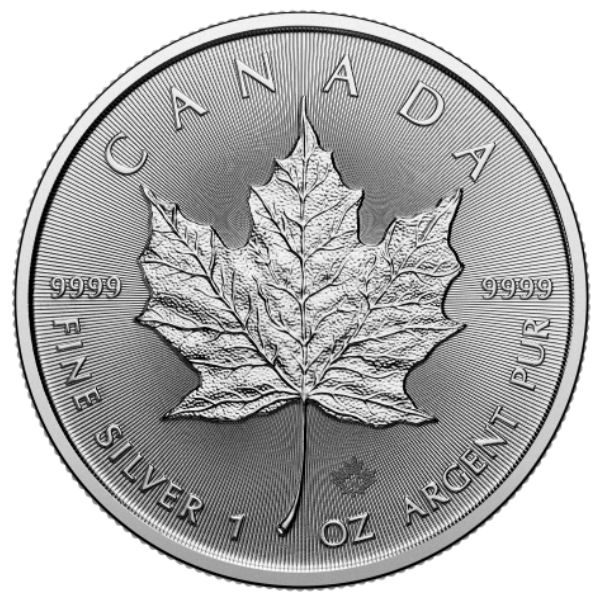Silver Thursday: The Day Three Brothers Almost Collapsed the Silver Market

In early 1979, silver was worth just over $6 per ounce. By January of the next year, it had skyrocketed to an astonishing all time high of nearly $50. For those keeping track at home, this is an increase of 833.3 percent. Less than one year later, prices had fallen below the original $6 figure from January of 1979.
What could have caused such a massive spike in silver prices? And what led to the unmatched freefall that followed? While we’d all love to see our silver stacks increase by a multiplier of eight this year, the unprecedented price fluctuations of 1980 are certainly not a result of natural supply in demand.
Instead, three brothers were responsible for some of the most significant price action in the history of the silver market.
This is the story of the Hunt Brothers, who were the investors responsible for Silver Thursday. In this history guide by Hero Bullion, we’re walking you through every key event of the Hunt brothers saga, which forever changed the landscape of the silver investing industry.
Timeline of Events: The Hunt Brothers Silver Saga
Below, we’ll explain everything you need to know about Silver Thursday. Get ready – this is quite a bit of information. The story starts in late 1979, and it ends less than a year later in March of 1980. Throughout this short saga, you’ll see how three brothers almost cornered the silver market – before it all came crashing down.
Late 1979: Hunt Brothers Start Stacking BIG
In early 1979, silver was cheap. An ounce of silver traded for around $6, according to the London Fix silver futures exchange. Like today, many investors in the 1970s believed that silver was undervalued and due for a major increase in price.
Three of these investors belonged to the powerful Hunt family, who had amassed a net worth of over $5 billion by 1979. Three brothers in the family, Nelson Bunker Hunt, William Herbert Hunt, and Lamar Hunt, felt that silver’s price was being artificially deflated.
As they looked over silver’s spot price, the brothers hatched a plan to corner the market.
Between January and December 1979, the Hunt brothers amassed one of the largest silver hoards in history. According to Encyclopedia Britannica, the brothers had eventually amassed a mouthwatering collection of over $4.5 billion in silver bullion. While conservative estimates put their hoard at around 100 million troy ounces, they also held an even greater share of the world’s silver futures contracts.
January 1980: Silver Hits an All Time High
Their plan to artificially inflate the price of silver was successful. Some outlets reported that, at the time, the Hunt family owned the majority of the world’s silver (excluding government-owned stashes).
Just as they planned, the market responded to this shortage with a massive price run for silver. The efforts of the Hunt brothers paid off when markets reported an average silver price of $45.45/oz on January 18th, 1980.
When these figures dropped, the Hunt brothers had some explaining to do. While the infamous “Silver Thursday” wouldn’t happen for another few months, public news of the Hunt family hoard became a national story – and exchanges needed to respond.
January 1980: Exchanges Fight Back
The event that really kicked off Silver Thursday happened on January 7th of 1980, just a couple weeks before silver hit its new all time high.
COMEX, the world leader in selling silver futures (stocks that bet on silver’s price movements), adopted a new rule on this date. While the Hunt brothers had succeeded in cornering the silver market, they had a fatal flaw in their plan: they were buying silver on margin.
When you buy something on margin, you’re betting that the commodity in question will increase in price. Margin allows investors to go “in the red,” essentially borrowing money from the exchange to place a larger bet on a given asset’s price movements.

By buying on margin, the Hunt brothers were able to secure more silver than they ever would have been able to if they only used their own cash to make each investment.
If they had been successful in driving prices up and selling when silver hit its all time high, they would have been able to cover the margin call and take an unprecedented profit. Unfortunately for the two investors, this isn’t how things turned out.
COMEX’s new rule placed renewed restrictions on how much margin the brothers were able to leverage in order to buy commodities like silver.
In just a couple of weeks, silver fell by over 50%, which caused mass panic for the public. But for the Hunt brothers, who now owed far more money than they anticipated on their silver futures, the consequences were far more dire.
March 1980: Precious Metal Dealers Respond
As the Hunt brothers scrambled to figure a way out of the mess they’d placed themselves in, other precious metal dealers and jewelers got involved in the fight.
Famed jewelry company Tiffany’s even took out a large ad in a popular newspaper condemning the three brothers for their actions – and their greed. For industries like the jewelry market that relied heavily on low precious metal prices, the Hunt brother scheme caused a massive shortage of the metals they needed to do business.
This was the least of the Hunt family’s worries, however. Since they had borrowed money via margins for most of their silver investments, they were now on the hook for a massive margin call that spelled bankruptcy for the powerful brothers.
March 27, 1980: Silver Thursday
The catastrophe came to a head in March of 1980, which is now known among silver investors as “Silver Tuesday.”
Since they were unable to continue buying silver on margin and were suffering losses as prices continued to fall, exchanges began asking for payment in the form of a “margin call.” For the uninitiated, a margin call is a fee charged to cover the increased risk of a large investment made on margin.
Because of how much the brothers had invested on margin prior to Silver Tuesday, they were asked to pay $100 million in margin calls. If they weren’t able to pay, they would lose a massive sum of $1.7 billion.
As the silver market panicked following the new exchange rules imposed by COMEX, prices continued to crash.
The Hunt Brothers’ Plan
To understand where things went so wrong for investors on Silver Tuesday, we need to take a closer look at the Hunt brothers’ plan to corner the silver market.
How to (Not) Corner the Silver Market
Like we mentioned earlier, the Hunt brothers believed that silver prices were being artificially deflated. To remedy the problem (and make some money), they began buying massive amounts of silver in 1979.
Their silver collection was unprecedented, and even modern silver hoards don’t really compare. By 1980, they held the majority of the world’s non-government silver.
It’s a scheme as old as time. By buying up most of the world’s available silver and betting heavily on silver futures, the brothers wanted to effectively corner the market. When the majority of the world’s silver was safely stored in their vaults, they could sit back and watch as prices skyrocketed.
Unfortunately, things didn’t quite pan out the way the Hunt family planned.
Fatal Flaw: Buying Bullion on Margin
The Hunt brothers couldn’t afford to buy most of the world’s silver outright. To make their plan work, they needed to place their bets on silver using a system known as margin investing.
By buying on margin, the brothers could buy far more silver than they ever could have with their own money. The upside to investing on margin is that, when you win, you win big. The fatal flaw? When you lose, you lose big.
And the Hunt brothers lost big, alright. When COMEX limited how much silver they could buy on margin and news of their attempts to corner the market went public, silver prices began to fall rapidly. They no longer cornered the market, but they still owed the stock exchanges for the losses incurred as prices dropped.

Where it All Went Wrong: Silver Thursday
It makes sense, then, that things went wrong fast for the would-be silver titans. On Silver Thursday, silver prices dropped at an unprecedented rate, falling just below where they had been before the Hunt Brothers attempted to corner the market.
Since they couldn’t afford to cover their losses, the Hunt brothers were in a jam. If they defaulted on their margin investments, they’d lose $1.7 billion dollars. With a loss this large, everyone loses.
How would the Hunt brothers escape the bind they’d put themselves in during Silver Thursday?
Aftermath of Silver Thursday
Three main things happened in the aftermath of Silver Thursday. Government officials began to fear the prospect of economic collapse, banks stepped in to help save the Hunt family from total economic loss, and the Hunt brothers finally faced the consequences of their actions nearly a decade later.
Governments Fear an Economic Collapse
The U.S. government even debated stepping in, as a default from the Hunt brothers could collapse major brokers and banks. Some experts even argued that this could lead to a total collapse in the stock market.
While it’s unclear whether or not the government helped persuade major banks to help prevent this outcome from happening, it’s not unreasonable to assume they may have played some sort of role in the event that followed.
April 1980: Banks Step in to Save the Silver Brothers
Several banks across the United States intervened to prevent the Hunt family from totally collapsing under the weight of their unsuccessful silver investments. It’s important to remember that, during Silver Thursday, analysts were genuinely concerned that the default of the Hunt brothers’ margin investments could cause genuine economic collapse in the U.S.
This move became even more controversial after the revelation that the Hunt brothers had actually invested in Bache, the lender who they would be using bank money to pay back after securing new loans.

The Hunt family ended up paying several million dollars in fines for failing to disclose their relationship with Bache.
Aside from this minor penalty, the intervention of American banks helped to save the Hunt brothers from most of the fallout of Silver Thursday. While they did lose hundreds of millions of dollars, the rumored financial collapse during Silver Thursday didn’t actually come to pass.
However, the Hunt brothers still needed to deal with the repercussions of their attempt to corner the silver market. It took eight years for lawsuits to finalize, but the trio of brothers eventually paid a hefty price for their crimes.
1988: Hunt Brothers Face Bankruptcy
In order to cover the $1.1 billion in credit provided by banks, the Hunt brothers were forced to put most of their existing assets up as collateral to the banks. Throughout the 1980s, they gradually lost money in nearly every industry.
Compounding the Hunt brothers’ woes was the fact that they still sustained heavy losses in the aftermath of Silver Thursday. All totaled, they lost just over one billion dollars after their attempt to corner the silver market backfired spectacularly.
Finally, the Hunt brothers faced their most significant consequence yet in 1988. In one of Texas’ largest ever bankruptcy filings, the Hunt brothers filed for bankruptcy after they were forced to part with over $134 million to a mining company affected by their artificial inflation of silver.
Today, the Hunt family is more powerful than ever. With a net worth of over $24 billion, they seem to have recovered quite well from the chaotic events of the 1980 silver market.
Final Thoughts: Silver’s Most Chaotic Year, Silver Thursday
This all brings us to today. In the current silver market, it would be unprecedented to see even a fraction of the price action the metal saw in 1980.
Most silver investors don’t know much about the chaotic date in silver history known as Silver Thursday. We’ve covered all the details of silver’s most chaotic year, and we’re excited to offer today’s investors a non-inflated selection of pure silver coins and bars.
You might also be interested in:
About The Author
Michael Roets
Michael Roets is a writer and journalist for Hero Bullion. His work explores precious metals news, guides, and commentary.
